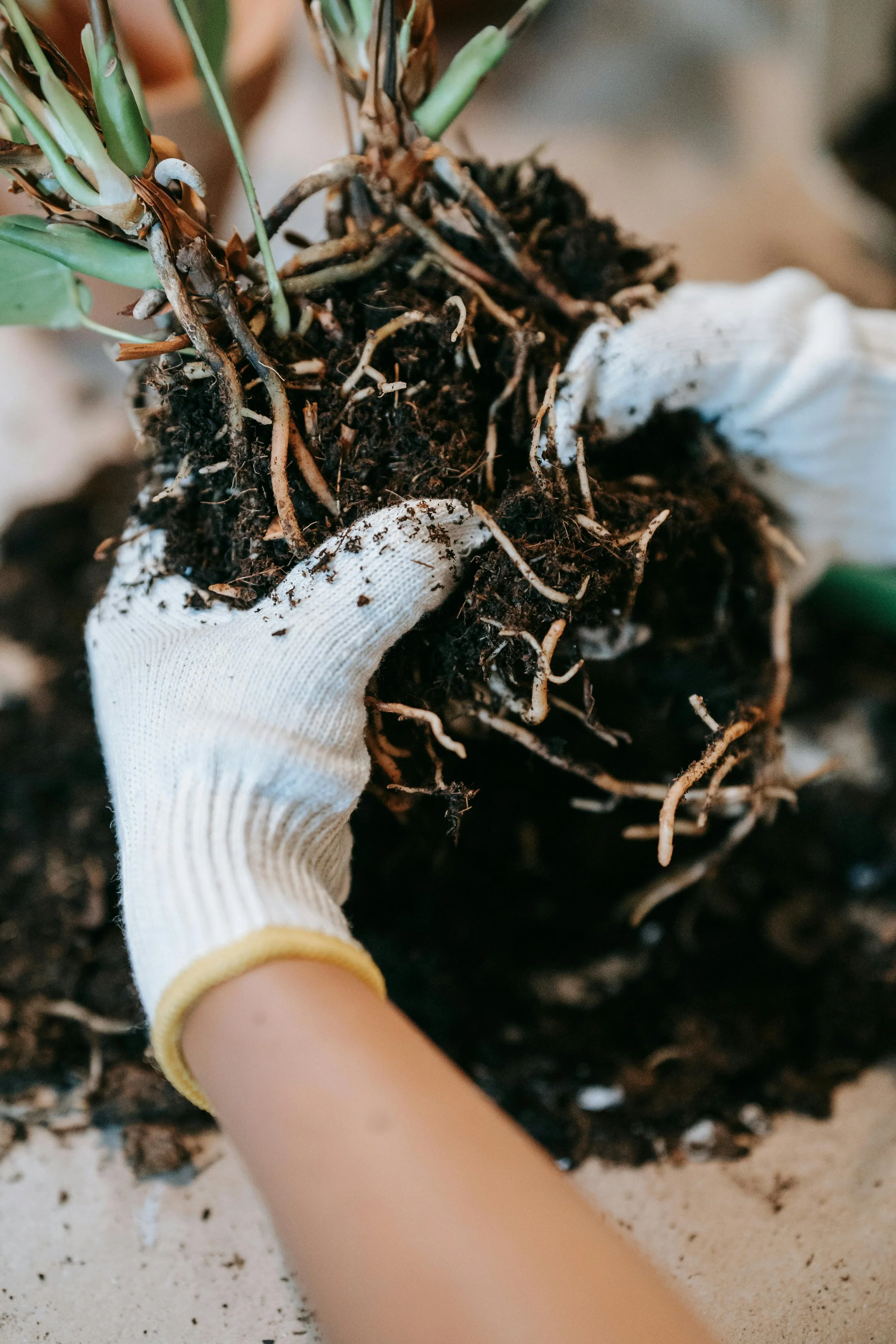How to Identify & Fix Root Rot
In the vibrant world of indoor gardening, houseplants are cherished companions, bringing life, color, and a touch of nature to our living spaces. However, even the greenest thumbs among us may encounter challenges, and one of the most common foes is the notorious root rot. Fear not, fellow plant enthusiasts, for in this sunny guide, we'll delve into the bright side of identifying and combating root rot to ensure your leafy friends thrive and flourish.
Understanding Root Rot in Houseplants
Root rot is a sneaky nemesis that can affect various houseplants, regardless of your gardening expertise. It occurs when the roots of your beloved green buddies become saturated with excess water, creating a damp environment ideal for the growth of harmful fungi. This fungal invasion compromises the roots' ability to absorb nutrients, leading to a decline in your plant's overall health.
How to Identify Root Rot
Now that we understand what root rot is and how it infects houseplants, let’s look at 5 tell-tale signs your plant is suffering from root rot:
Yellowing & Wilting Leaves
One of the earliest indicators of root rot is the wilting and yellowing of leaves. While these symptoms may initially be mistaken for a lack of water, closer inspection will reveal that the soil is consistently moist or even waterlogged.
Odor
A less-than-pleasant smell emanating from the soil is a sure sign that trouble is brewing beneath the surface. Root rot often produces a distinct, musty odor, signaling the presence of decaying roots and fungal activity.
Mushy, Brown Roots
Healthy roots should be firm and white. However, if you gently tug on the base of your plant and notice soft, mushy roots with a brownish tint, your green companion might be in the clutches of root rot.
Stunted Growth
Root rot impedes the plant's ability to absorb nutrients, resulting in stunted growth. If your once-vigorous plant starts lagging in its development, it's time to investigate the root system.
Leaf Drop
As the root system deteriorates, your plant may shed its leaves as a desperate attempt to conserve energy. Keep an eye out for excessive leaf drop, especially if accompanied by the aforementioned symptoms.
How to Fix Root Rot
Now that we've shed light on identifying root rot, let's explore five ways to nurse your green comrades back to health:
Adjust Watering Frequency
The key to preventing and treating root rot lies in maintaining proper watering practices. Ensure that your pots have drainage holes, allowing excess water to escape. Adopt a consistent watering schedule, allowing the top inch of soil to dry out before the next watering session.
Choose the Right Soil
Opt for well-draining soil mixes designed for your specific plant varieties. A combination of peat, perlite, and pine bark works wonders, providing an ideal balance between water retention and drainage.
Repot Infected Plants
If you suspect root rot, gently remove the plant from its pot and inspect the root system. Trim away any rotting or damaged roots with clean, sharp scissors or pruning shears. Repot the plant in fresh, well-draining soil, adjusting the size of the pot if necessary.
Consider Antifungals
If your root rot problem is especially persistent, embrace the power of nature by incorporating natural antifungal agents into your plant care routine. Neem oil, cinnamon powder, or chamomile tea can be applied to the soil or used as a foliar spray to deter fungal growth.
Quarantine Infected Plants
If you've successfully treated a plant for root rot, consider isolating it for a few weeks before reintroducing it to its plant companions. This precautionary step prevents the potential spread of fungi to other healthy plants.
In the world of indoor gardening, overcoming challenges like root rot can be a joyful journey of learning and growth. Armed with the knowledge to identify the early signs and armed with the sunny solutions to combat root rot, you can transform your indoor oasis into a thriving haven for vibrant, healthy houseplants. So, embrace the greenery, bask in the joy of nurturing your leafy friends, and let your home be filled with the cheerful energy of flourishing plants. Happy gardening!

